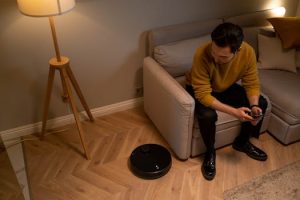When Smart Homes Get Stupid: Troubleshooting Tech Gone Wrong
It’s no secret that with the rise of technology, our homes have become smarter too. From voice activated assistants to automated systems that control everything from lighting to security, our homes have transformed into hubs of convenience and efficiency. However, what happens when the tech that’s supposed to make our lives easier, backfires on us?
The Promise of Smart Homes
With the promise of convenience and connectivity, the market for smart homes has exploded in recent years. According to Statista, the global smart home market is projected to reach a value of $158 billion by 2024. From smart thermostats to smart cameras, the possibilities seem endless when it comes to creating a seamless and efficient home environment.
The Reality of Tech Gone Wrong
But as with any technology, glitches and malfunctions are bound to happen. And when it comes to our homes, the consequences of these malfunctions can not only be frustrating and inconvenient, but also potentially dangerous.
From malfunctioning thermostats that leave you in the cold to security cameras that suddenly stop working, the reality of smart home technology gone wrong can be a nightmare to deal with. And if you’re not tech-savvy, troubleshooting these issues can seem like an impossible task.
Common Issues and Solutions
One of the most common issues with smart home technology is the failure of devices to connect and communicate with each other. This can lead to your smart home system being unable to carry out automated tasks, such as turning off lights or adjusting the temperature.
To troubleshoot this issue, it’s important to check the connectivity of your devices. Make sure they are connected to the same Wi-Fi network and that their firmware is up to date. If the issue persists, try resetting the devices and reconfiguring them.
Another common problem with smart homes is the compatibility of different devices from different brands. The lack of standardization in the industry can make it difficult for devices to communicate with each other, resulting in a fragmented and unreliable system.
To avoid this issue, do your research before investing in smart home devices. Stick to one brand or make sure the devices you’re purchasing are compatible with each other.
The Importance of Regular Maintenance
Just like with any technology, regular maintenance is essential for the smooth functioning of your smart home. Make sure to update the software and firmware of your devices regularly and check for any potential security vulnerabilities that may need to be addressed. It’s also important to regularly clean and maintain your devices to ensure their longevity.
The Future of Smart Homes
Despite the challenges that come with it, the future of smart homes is still bright. With advancements in technology and increased standardization in the industry, smart homes are becoming more reliable and easier to troubleshoot. And as our reliance on technology continues to grow, it’s safe to say that the demand for smart homes will only continue to rise.
As we rely more on technology to make our lives easier, it’s important to also acknowledge the potential risks and challenges that come with it. By being proactive in troubleshooting and maintaining our smart homes, we can ensure that the promise of convenience and efficiency is not hindered by technology gone wrong. So go ahead, make your home smarter, but don’t forget to stay on top of troubleshooting and maintenance.









